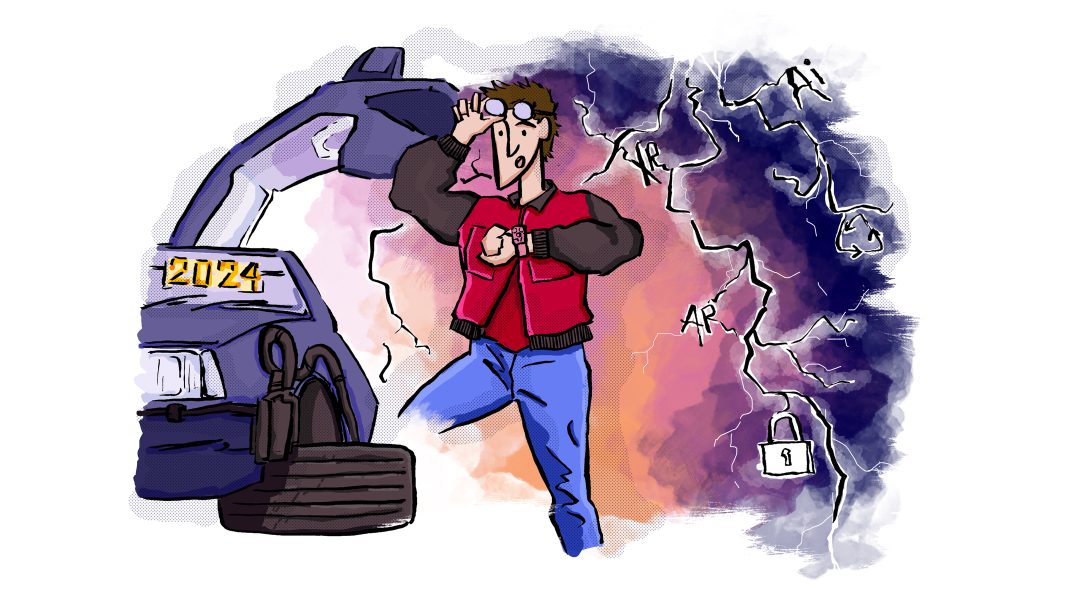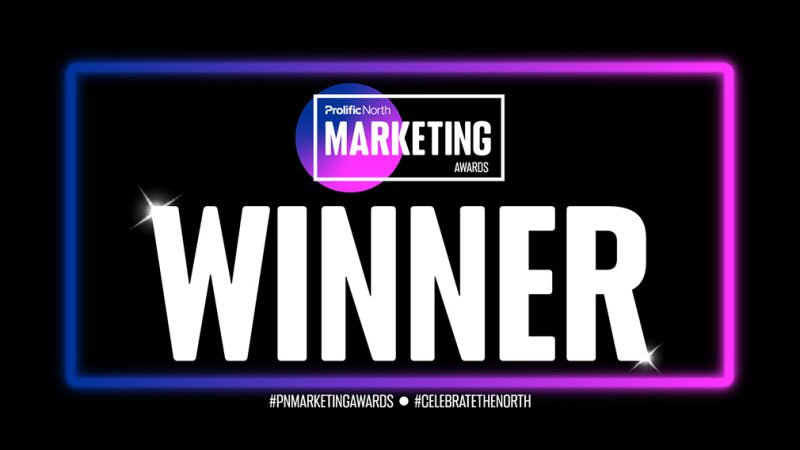Our 5 predictions for advertising and marketing in 2024.
Topic
2024 Predictions5 mins read

As we enter 2024, we’ve dusted off our crystal ball and looked into the future to predict where advertising and marketing might be heading this year. From the evolution of AI to the blurring of reality, a lot of it sounds like sci-fi but in fact, it’s only around the corner. Strap yourselves in.
The rise of personalised AI-driven advertising
In 2024, we can expect a significant surge in the use of AI to deliver highly personalised advertising experiences. AI algorithms will analyse vast amounts of user data, including online behaviour, preferences and demographics, to create targeted and relevant ad content. Advertisers will leverage machine learning to predict consumer preferences, optimising ad placements and formats in real time. This level of personalisation will enhance user engagement, leading to more effective and efficient advertising campaigns.
As AI continues to evolve, advertisers will also tap into natural language processing (NLP) capabilities to create more conversational and context-aware ads. Interactive chatbots and voice-activated advertisements may become commonplace, providing users with a more immersive and personalised brand experience. This shift towards AI-driven personalisation will improve ad performance and foster stronger connections between brands and consumers by delivering content tailored to their needs and preferences.
An emphasis on privacy-centric advertising models
With increasing concerns about data privacy, 2024 will see a heightened emphasis on privacy-centric advertising models. Stricter regulations and consumer awareness will drive advertisers to adopt transparent and privacy-focused approaches. Advertisers will prioritise consent-driven data collection, ensuring that users have control over how their information is used. Zero-party data, obtained directly from users through opt-ins, will become a highly valuable asset for personalised advertising (see above) without compromising privacy.
Privacy-enhancing technologies such as federated learning and on-device processing will gain prominence, allowing advertisers to analyse user data without transferring sensitive information to external servers. Advertisers may even go so far as to communicate their commitment to privacy in their messaging, building trust with consumers who are increasingly wary of data misuse. Brands that champion privacy and prioritise user consent will not only comply with regulations but also establish themselves as trustworthy entities in the eyes of consumers, fostering long-term relationships based on respect for individual privacy.
Ethics and sustainability emerge as central themes
While they’re already gaining increased importance, ethical advertising and sustainability will emerge as central themes in marketing strategies this year. Consumers are increasingly conscious of the social and environmental impact of their purchasing decisions, prompting brands to align with values that prioritise ethics and sustainability. Advertisers will focus on transparent communication of their ethical practices, showcasing responsible sourcing, production processes and corporate social responsibility (CSR) initiatives.
Brands that actively promote environmental sustainability and social responsibility will gain a competitive edge. Ad campaigns will emphasise eco-friendly practices, fair labour conditions and community support, resonating with socially conscious consumers. Authenticity will be paramount, with consumers demanding genuine commitment to ethical principles. Advertisers will invest in storytelling that highlights their brand’s positive contributions, fostering a sense of trust and loyalty among consumers who prioritise ethical considerations in their purchasing decisions.
The era of purpose-driven marketing will be fully realised, with brands recognising the need to contribute positively to society while promoting their products or services.
Augmented Reality (AR) transforms consumer engagement
AR will continue to play a pivotal role in reshaping consumer engagement in advertising and marketing this year. As AR technology becomes increasingly accessible through more powerful smartphones and smart glasses, advertisers will leverage it to create better immersive and interactive brand experiences than we’ve seen before. Consumers visualising products in real-world environments before making a purchase decision will become more commonplace, enhancing their shopping experience.
AR-powered advertisements will improve, too, offering dynamic and engaging content that responds to user interactions. From virtual try-on experiences for fashion brands to interactive tours for travel destinations, AR will enable advertisers to captivate audiences in ways previously unimaginable. The integration of AR in advertising will drive higher user engagement and provide valuable data insights into consumer preferences and behaviours, helping advertisers refine their targeting strategies.
Seamless integration of Extended Reality (XR) in advertising
In 2024, we’ll witness a significant integration of Extended Reality (XR) in advertising, encompassing both Virtual Reality (VR) and Mixed Reality (MR). XR technologies will redefine the way brands connect with consumers, offering immersive and memorable experiences. VR will be used to create virtual showrooms, allowing users to explore products in a simulated environment. MR will enable a seamless blending of the virtual and physical worlds, enabling interactive and context-aware advertisements.
The integration of XR in advertising will not only capture attention but also provide a novel platform for storytelling. Brands will craft narratives that unfold in virtual spaces, providing users with a unique and engaging journey. From virtual product launches to immersive brand experiences, XR will become a powerful tool for advertisers to differentiate themselves in a crowded market. As XR devices become more accessible, advertisers will capitalise on this trend to create campaigns that transcend traditional boundaries and leave a lasting impact on consumers.
If we had to pick one… *drumroll*
We’ve made a lot of predictions there, but if we had to pick one, it would be the increasing dominance of interactive and immersive content. As consumer attention spans continue to plummet and ad fatigue rises, brands will need to invest in content that goes beyond traditional formats increasingly. Interactive and immersive experiences that leverage technologies like CGI, AR and VR allow them to do this better than any other medium and will, therefore, take centre stage.
Brands will enter a new kind of competition, striving to create campaigns that actively engage users, encouraging active participation rather than passive consumption. From gamified advertisements to AR-enhanced shopping experiences and CGI outdoor activations, brands will seek to make their content more memorable and impactful. This shift reflects a recognition that consumers not only want information but also crave experiences that resonate on a deeper level, changing the objective from simply capturing attention to fostering stronger emotional connections.
Do you have any predictions for where advertising and marketing might be heading this year? We’d love to hear them, so let us know in the comments wherever you found this blog.

